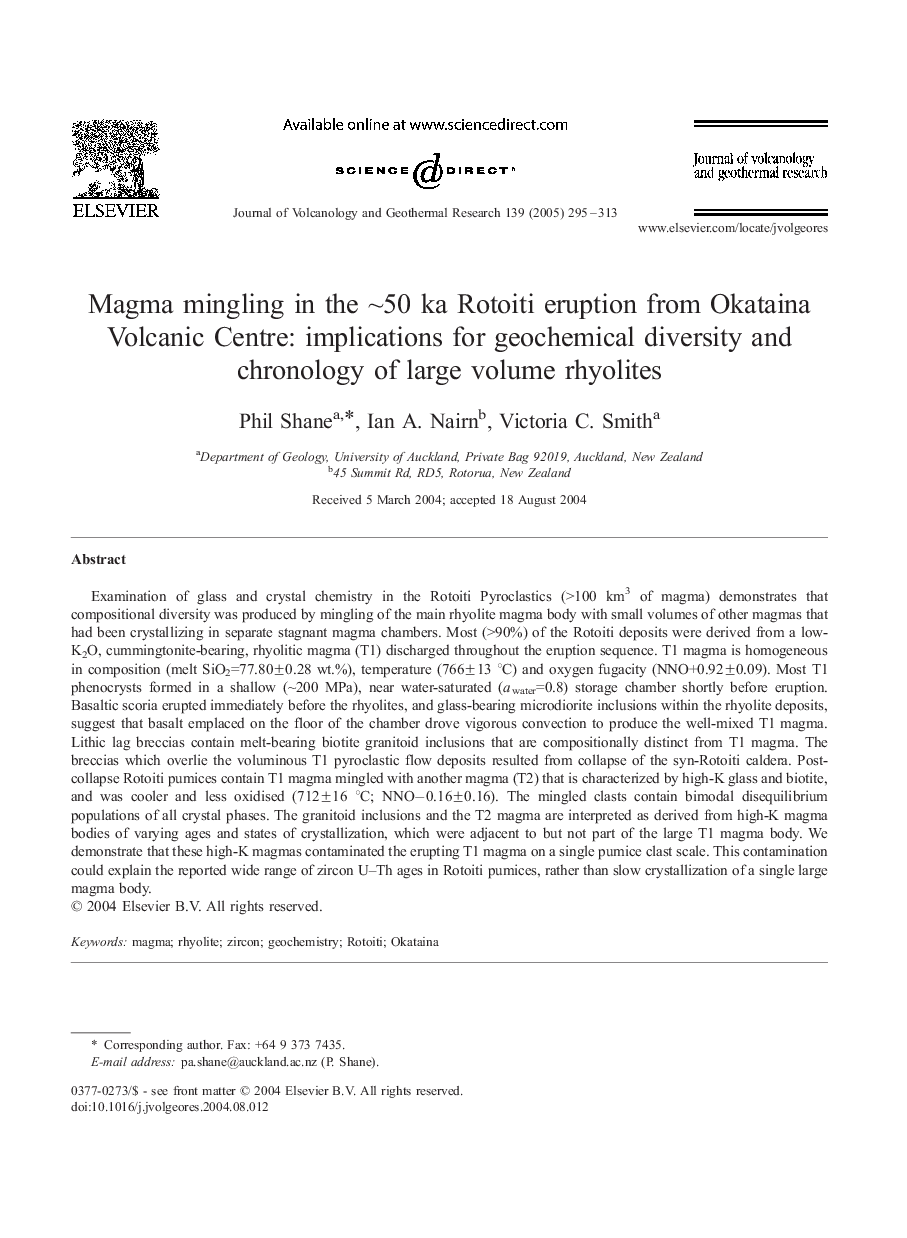| کد مقاله | کد نشریه | سال انتشار | مقاله انگلیسی | نسخه تمام متن |
|---|---|---|---|---|
| 9531685 | 1638503 | 2005 | 19 صفحه PDF | دانلود رایگان |
عنوان انگلیسی مقاله ISI
Magma mingling in the â¼50 ka Rotoiti eruption from Okataina Volcanic Centre: implications for geochemical diversity and chronology of large volume rhyolites
دانلود مقاله + سفارش ترجمه
دانلود مقاله ISI انگلیسی
رایگان برای ایرانیان
موضوعات مرتبط
مهندسی و علوم پایه
علوم زمین و سیارات
ژئوشیمی و پترولوژی
پیش نمایش صفحه اول مقاله

چکیده انگلیسی
Examination of glass and crystal chemistry in the Rotoiti Pyroclastics (>100 km3 of magma) demonstrates that compositional diversity was produced by mingling of the main rhyolite magma body with small volumes of other magmas that had been crystallizing in separate stagnant magma chambers. Most (>90%) of the Rotoiti deposits were derived from a low-K2O, cummingtonite-bearing, rhyolitic magma (T1) discharged throughout the eruption sequence. T1 magma is homogeneous in composition (melt SiO2=77.80±0.28 wt.%), temperature (766±13 °C) and oxygen fugacity (NNO+0.92±0.09). Most T1 phenocrysts formed in a shallow (â¼200 MPa), near water-saturated (awater=0.8) storage chamber shortly before eruption. Basaltic scoria erupted immediately before the rhyolites, and glass-bearing microdiorite inclusions within the rhyolite deposits, suggest that basalt emplaced on the floor of the chamber drove vigorous convection to produce the well-mixed T1 magma. Lithic lag breccias contain melt-bearing biotite granitoid inclusions that are compositionally distinct from T1 magma. The breccias which overlie the voluminous T1 pyroclastic flow deposits resulted from collapse of the syn-Rotoiti caldera. Post-collapse Rotoiti pumices contain T1 magma mingled with another magma (T2) that is characterized by high-K glass and biotite, and was cooler and less oxidised (712±16 °C; NNOâ0.16±0.16). The mingled clasts contain bimodal disequilibrium populations of all crystal phases. The granitoid inclusions and the T2 magma are interpreted as derived from high-K magma bodies of varying ages and states of crystallization, which were adjacent to but not part of the large T1 magma body. We demonstrate that these high-K magmas contaminated the erupting T1 magma on a single pumice clast scale. This contamination could explain the reported wide range of zircon U-Th ages in Rotoiti pumices, rather than slow crystallization of a single large magma body.
ناشر
Database: Elsevier - ScienceDirect (ساینس دایرکت)
Journal: Journal of Volcanology and Geothermal Research - Volume 139, Issues 3â4, 15 January 2005, Pages 295-313
Journal: Journal of Volcanology and Geothermal Research - Volume 139, Issues 3â4, 15 January 2005, Pages 295-313
نویسندگان
Phil Shane, Ian A. Nairn, Victoria C. Smith,